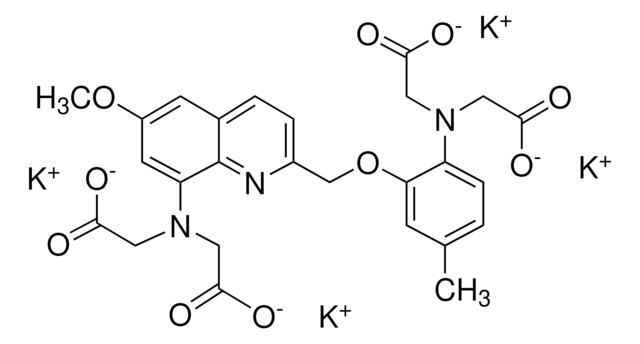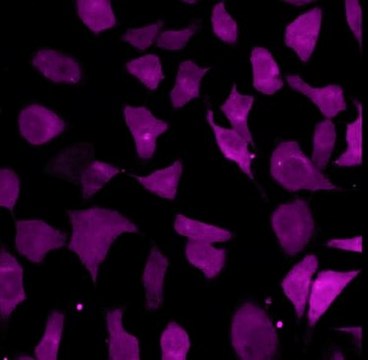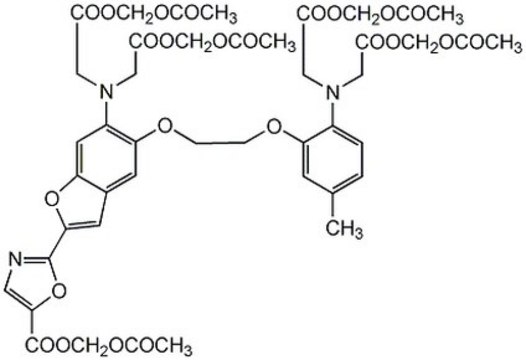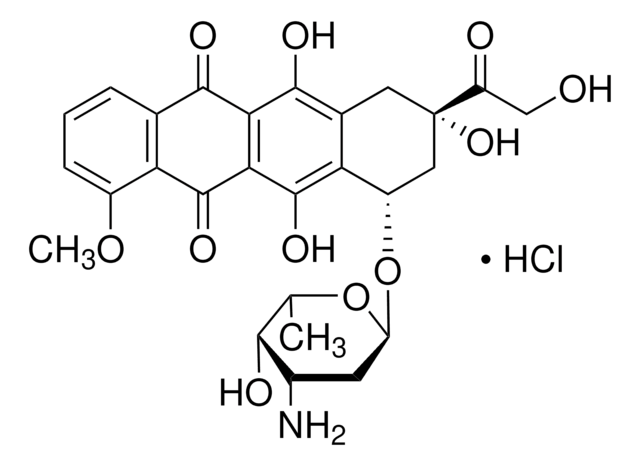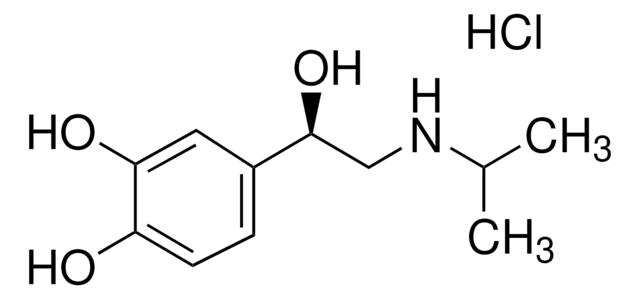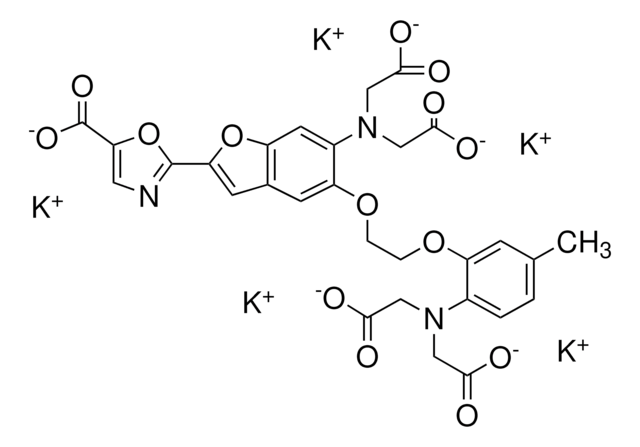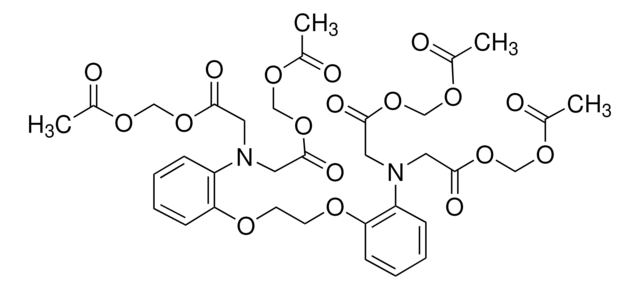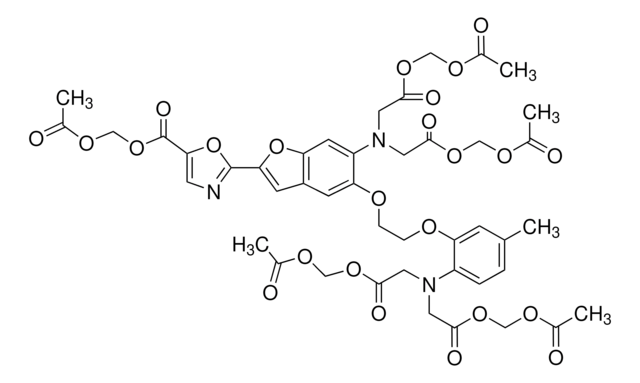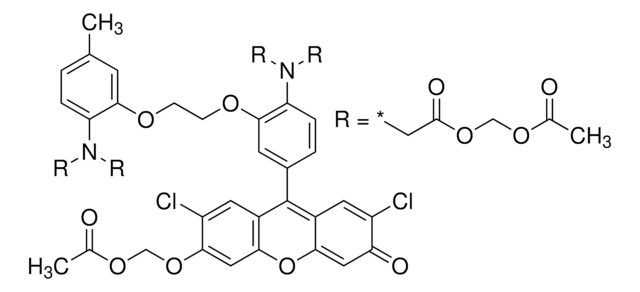551826
QUIN 2, Tetrapotassium Salt
Binding of Ca2+ leads to a major shift in UV absorption spectrum and a twenty-fold enhancement in fluorescence quantum yield.
Synonym(s):
QUIN 2, Tetrapotassium Salt, 2-{[2- bis(Carboxymethyl)amino-5-methylphenoxy]methyl}-6-methoxy-8- bis(carboxymethyl)aminoquinoline, 4K, 2-{[2-bis(Carboxymethyl)amino-5-methylphenoxy]methyl}-6-methoxy-8-bis(carboxymethyl)aminoquinoline, 4K
About This Item
Recommended Products
Quality Level
Assay
≥95% (HPLC)
form
solid
manufacturer/tradename
Calbiochem®
storage condition
OK to freeze
protect from light
color
yellow
solubility
water: 10 mg/mL
fluorescence
λex 332 nm (high)
λex 354 nm (low)
λem 505 nm (high)
λem 510 nm (low)
shipped in
ambient
storage temp.
−20°C
SMILES string
[K+].[K+].[K+].[K+].N(CC(=O)[O-])(CC(=O)[O-])c1c(cc(cc1)C)OCc2nc3c(cc(cc3N(CC(=O)[O-])CC(=O)[O-])OC)cc2
InChI
1S/C26H27N3O10.4K/c1-15-3-6-19(28(10-22(30)31)11-23(32)33)21(7-15)39-14-17-5-4-16-8-18(38-2)9-20(26(16)27-17)29(12-24(34)35)13-25(36)37;;;;/h3-9H,10-14H2,1-2H3,(H,30,31)(H,32,33)(H,34,35)(H,36,37);;;;/q;4*+1/p-4
InChI key
XAGUNWDMROKIFJ-UHFFFAOYSA-J
General description
Biochem/physiol Actions
Calcium Probes
Warning
Reconstitution
Other Notes
Vijayaraghavan, S. and Hoskins, D. 1989. Cell Calcium10, 241.
Arslan, P., et al. 1985. J. Biol. Chem.260, 2719.
Bryant, D.T. 1985. Biochem. J.226, 613.
Grynkiewicz, G., et al. 1985. J. Biol. Chem.260, 3440.
Ashley R.H., et al. 1984. Biochem. J.219, 149.
Tsien, R.Y., et al. 1982. J. Cell Biol.94, 325.
Tsien, R.Y. 1980. Biochemistry19, 2396.
Legal Information
Storage Class Code
11 - Combustible Solids
WGK
WGK 3
Flash Point(F)
Not applicable
Flash Point(C)
Not applicable
Certificates of Analysis (COA)
Search for Certificates of Analysis (COA) by entering the products Lot/Batch Number. Lot and Batch Numbers can be found on a product’s label following the words ‘Lot’ or ‘Batch’.
Already Own This Product?
Find documentation for the products that you have recently purchased in the Document Library.
Our team of scientists has experience in all areas of research including Life Science, Material Science, Chemical Synthesis, Chromatography, Analytical and many others.
Contact Technical Service